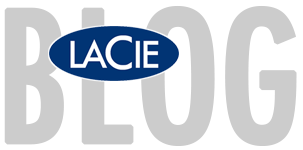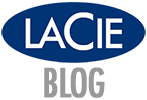For photographers growing their client lists, and booking more shoots, who need to boost their capacity to manage more work — Jay P. Morgan has posted a new video giving a peek into how he manages all the data, filing and backups from his voluminous jobs.
Jay P. is a veteran of over 20 years in commercial photography and film whose distinct style often blends a reassuring familiarity with an inventive, amusing or even bizarre edge. His clients have ranged from Capitol Records to the California Cheese Council, from Frigidaire to Frito Lay — and he’s created for many of the slickest ad agencies from BBDO to Young & Rubicam.
Jay P. has previously filled us in on his foolproof workflow when shooting on location. This time, he says, “we’re going to show you the process we go through when we get back to the studio with all this great media — all the things that we’ve photographed or videotaped when we’ve been out on location.”
“When you get back to the studio it’s got to get backed up and archived so you’ll never lose it!”
Creating way too much media
Jay P. says his team has grown to the point where they’re creating way too much media to be “willy-nilly” in how they process and organize it. So, “years ago, we put together a really good system be able to back our stuff up.”
Jump ahead in the video to hear Jay P. describe his digital filing system, including why he sets up ten folders for a shoot, and how he uses each of them, including how he labels them to keep track of shoot assets, model releases, and all the other important documentation that goes along with each job. Watch the video to see his actual file-naming and filing workflow in detail — he explains his numbering system, a very simple consecutive stacking system which he uses to correlate with a FileMaker relational database.
But first up, Jay P. explains his most crucial process — moving and backing up his precious image data.
Whenever Jay P. and his team return from a shoot, he brings three important things in the door: his collection of camera memory cards, and two LaCie Rugged drives. “One of the LaCie drives actually has an internal backup in it — you’ve got two drives inside here, so it’s already mirrored inside this drive,” he notes, showing the Rugged RAID. “So really it’s in three places here,” counting only the two LaCie drives!
He says he tries not to have to erase any cards when he’s on location — so the team carries eight or more cards with them, to have plenty of cards to shoot through everything.
Backup to Rugged; backup to 6big Thunderbolt 3
When he arrives back home to the studio, “I’ve already backed it all up on my LaCie Rugged drives.” Now he’ll want to pull the images again from the original cards into his workstation. The process begins with his Lexar tower — a workflow hub that enables data transfer from multiple camera cards at once.
“But where do we download it to?” Jay P. asks. “Well I have a system of drives, one through ten — ten being the most recent drive, that’s the last work that we’re doing. It’s a LaCie 6big drive.”
“It’s a Thunderbolt 3 drive,” Jay P. adds. “It’s very fast to edit from, that’s why we use it as our primary drive.”
At nighttime, each of these LaCie big drives is set up to mirror or backup, using Apple’s Time Machine, to another drive — so they’re always in the process of being backed up. “So, number ten is going to be backed up by this 5big LaCie, so it’s in two places here at the studio.”
Follow a regular, repeatable process to keep your image data safe
Jay P. makes sure his data endures, while also freeing up his gear for more work, by following a fixed protocol: “The day that we download the cards, we erase those files in the camera; the day that we know that the back up has happened on Time Machine, we now erase the LaCie external drives.”
Now all the original film has been backed up twice to system editing drives, and the Ruggeds are clear and prepped to travel to the next shoot. ”The minute we see that it’s backed up to Time Machine, we erase them off from these drives, and these two [Rugged] drives go into my briefcase. I don’t think about it when I leave — they’re always in my bag ready for the next job.”
Learn more about Jay P. Morgan >

